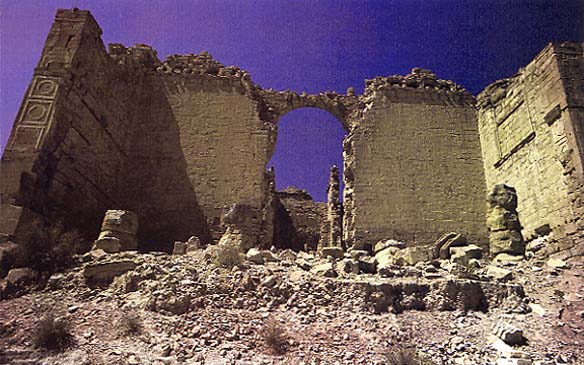Image Details

Gail Rubin
The Temple of Dhu-Shara, popularly known as the Palace of the Daughter of Pharaoh (in Arabic, Qasr Bint Faroun), honored the ancient Nabataean desert god Dhu-Shara. One of the few freestanding structures at Petra, the temple was built on a colossal scale and decorated with painted plaster designs reminiscent of Pompeian frescoes. Carved, square panels of plaster decorated the pilasters at all four corners. The missing north front wall of the temple faced the Temenos gateway on the main colonnaded street. The missing wall consisted of a huge pillared portico. Stumps of four portico pillars can be seen in the foreground. The massive main wall sustains an arch which long ago was only a relieving arch over the lintel of the main door. Almost 60 feet high, the building stands on a podium, measuring 110 feet by 120 feet, which was originally faced with marble. A Nabataean inscription by Aretas IV, engraved on a bench of the temple complex and found in situ, attests that the portico construction date could have been as early as 9 B.C.
